Throughout the IMB’s 175-year history, single women have played groundbreaking, vital and pivotal roles in the advance of the gospel around the globe.
Though we have many stories to tell, journey with us through a brief history of single women who have served with the IMB.
The 1840s
In 1849, the Foreign Mission Board’s first single female missionary, Harriet A. Baker, was appointed to China. Her term was tumultuous, and she returned to the U.S. within a few years. For the next two decades, the FMB (now the IMB) asserted single women were not fit to serve overseas.
Though single women in missionary service had a rocky start, in the 1870s their role in fulfilling the Great Commission would surge and continue to accelerate throughout the decades to come.
The 1870s
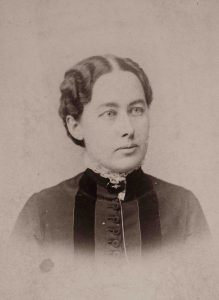
Lula Whilden was a gifted evangelist who shared the gospel with thousands during her 45 years in China.
The 1870s ushered in the explosion of the women’s missionary movement. By the 1870s, many Baptist women were anxious to go overseas, and, as one of his final acts, the FMB leader at the time, James B. Taylor, appointed Lula Whilden to China in 1871.
Whilden was most drawn to China’s destitute women. She spent endless days ministering among women who lived on tiny boats along the Pearl River. Lula also started a home and school for blind girls, who were treated as slaves. Redeeming them for as little as $10, Lula provided more than freedom. She gave them endless love and care and the opportunity for eternity with Jesus.
In 1872, FMB leader Henry Allen Tupper was eager to appoint women, both married and single, for they could minister in lands where women were not permitted to associate with men outside their families. In 1872, Edmonia Moon (sister to Southern Baptists’ beloved missionary, Lottie Moon) went to China, and Lottie followed a year later.
The Foreign Mission Board appointed Charlotte D. “Lottie” Moon to China in 1873. Her heroic service and challenging letters home over the next four decades rallied Southern Baptists to the cause of missions.
Because the FMB, still recovering from the financial devastation of the Civil War, could not afford to support the Moon sisters, Tupper encouraged churches and women’s societies to raise funds for their salaries. This began the long-standing tradition of women’s missionary groups supporting missionaries through prayer, fundraising and advocating for overseas needs.
The 1880s
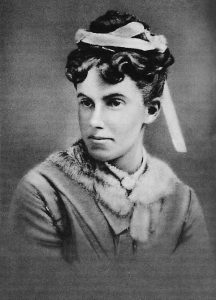
Forced out of China due to malnutrition and sickness, Lottie Moon’s 50-pound frame could not survive the journey back to the United States. Though thousands mourned her passing, her life’s work in China represented eternity to many.
The women’s missionary movement that began in the 1870s continued gaining force in the 1880s. In 1888, the Woman’s Missionary Union officially formed as an auxiliary to the Southern Baptist Convention. The organization became an essential force for missions education, support and prayer among Southern Baptists.
That same year, WMU leader Annie Armstrong instituted a Christmas offering for foreign missions, which missionary Lottie Moon had proposed in a letter the year before. Armstrong penned one thousand letters and sent out 30,000 offering envelopes to promote that first Christmas offering.
The 1900s
In the 1900s, the FMB began regularly appointing nurses, including Jessie Pettigrew, the first FMB nurse.
Women educated at the WMU Training Center in Kentucky started community centers in China, Japan and other nations. As women and children attended tutoring programs, exercise gyms and parenting classes, female missionaries developed deep relationships that allowed them to naturally share the gospel.
The 1910s
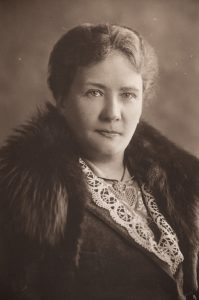
Attie Bostick grew her giving to FMB to the amount of one month’s salary each year.
On Christmas Eve 1912, beloved missionary Lottie Moon died aboard a ship bound for the United States. Four years later, the annual missions offering instituted by Annie Armstrong was renamed the Lottie Moon Christmas Offering® in honor of the woman who gave 40 years of her life to the people of China.
Today, almost 60% of the mission board’s income is from this annual offering.
Attie Bostick began serving with the FMB in 1916. In the previous organization Bostick served with, she received $290.37 for an entire year. The FMB was in considerable debt, so Southern Baptist missionaries in northern China sacrificed their own allowance for Bostick’s first six months’ salary. Bostick divided what she received to send to her family and gave to the FMB to help off-set the debt.
God used Bostick’s sacrificial spirit in China. She cared for the sick, repaired houses and churches, and even served others during her year-and-a-half-long internment by the Japanese.
The 1920s
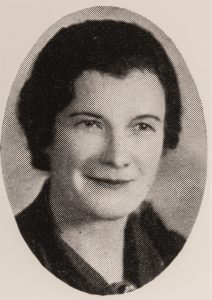
Within 25 years of Agnes Graham’s arrival in Chile, the number of Chilean churches had jumped to more than 50.
In the 1920s, FMB missionaries experienced what some consider the greatest revival in Baptist church history. In China’s Shantung province, missionaries had been disheartened because of the lack of progress. Missionary Mary Crawford said groups began earnestly praying for revival. In 1927, a decade-long revival spread from Shantung province in the north throughout the entire country.
Agnes Graham was the first single FMB missionary to Chile. Agnes immersed herself in Spanish and the heavily Catholic Chilean culture. When Colegio Bautista was founded in Temuco in 1922, Agnes became the director.
The Commission magazine stated in 1940, “The intense evangelistic spirit of Agnes Graham has permeated every phase of the life and activity of this school, until it has become one of the most fruitful evangelistic agencies in all Chile.”
The 1930s
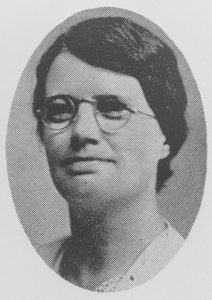
Bertha Smith first served in China. In 1948, she moved to Taiwan to continue another decade of service in Asia and a lifelong commitment to prayer.
The Shantung Revival continued through the next decade and encouraged FMB missionary Bertha Smith to stand firm in ministry, even as Japanese forces invaded China at the beginning of World War II. She kept the local church open for services, started new Bible studies, and faithfully ministered at the hospitals, which were quickly overflowing with wounded. Her prayer life remained strong, even during a year in a Japanese internment camp. In 1948, she moved to Taiwan to continue another decade of service in Asia.
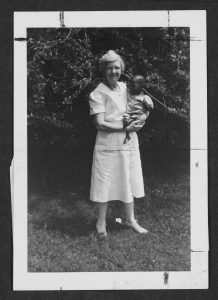
Nurse Ruth Kersey started the Home for Motherless Children in Nigeria to care for babies whose mothers died or could not care for their infants because of leprosy.
Missionary Ruth M. Kersey wrote about the staggering reality that many women die in childbirth in Nigeria. Southern Baptist women in Virginia donated money to build a home for the orphans. In 1935, the WMU of Virginia took on full support of Kersey’s ministry.
The 1950s
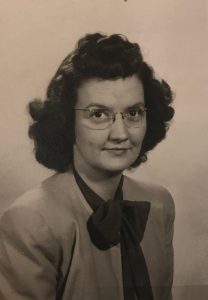
Catherine Walker stayed on the mission field 35 years. She then served four more years as special assistant to the president for intercessory prayer at the Foreign Mission Board.
Just six weeks after arriving in China, Catherine Walker received a letter from the American consul advising all Americans to leave the Community-threatened area. After much prayer, Catherine chose to stay in China. Walker later served in Indonesia and taught at the Indonesian Baptist Theological Seminary. Catherine wrote seven seminary textbooks. Her Bible Workbooks, Volumes 1 and 2, are still being used.
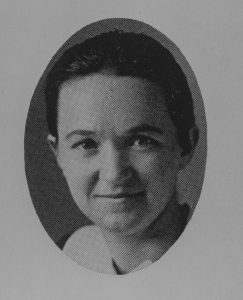
Hattie Gardner loved the villages that were far away from towns and cities. She felt happy in the “bush” regions and she loved the people she met there.
Hattie Gardner was willing to travel miles, even on horseback if necessary, to reach remote areas. She was determined to do what some thought would be impossible for the five-foot woman. After more than a decade in Nigeria, Hattie moved to the bush to live and work among the Batonu people. Living for years in a trailer pulled by her Land Rover, Hattie opened a school for children, taught the Bible and planted churches.
The 1960s
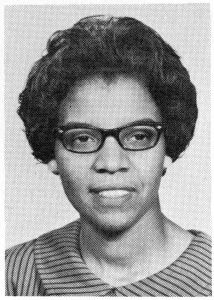
Mary Sue Thompson, a highly educated schoolteacher, wanted to teach in Nigeria and build a ministry that would support FMB’s missionary work in Africa.
Before Mary Sue Thompson’s appointment in 1967, it had been more than 80 years since the FMB had appointed any African Americans for career missionary service. She received a warm reception from the Nigerians among whom she served.
“Nigerians, other Africans and people around the world have asked me, ‘Why don’t Southern Baptists have more black missionaries?’”
The 1970s
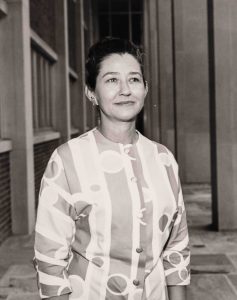
Mavis Pate served in a Baptist hospital in Gaza. She died in an attack while traveling to Tel Aviv, Israel.
In 1972, missionary nurse Mavis Pate traveled by van with a missionary family to Tel Aviv, Israel. Their van was hit with heavy automatic weapon fire. More than 50 shots were fired at the vehicle, a violent attack by the Palestine Liberation Organization. Mavis was critically wounded and lived only three hours after the attack.
Former patients, fellow missionaries, hospital staff and national friends joined embassy representatives and United Nations relief workers to mourned her death.
The 1980s
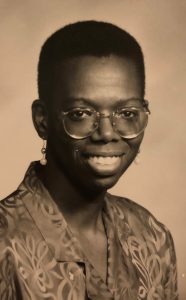
A native of Jamaica and a naturalized U.S. citizen, Yvette Aarons first applied to the FMB for missions service in 1985.
In 1989, the FMB’s first Deaf missionary, Yvette Aarons, was commissioned for a four-year special assignment to Trinidad. She was appointed as a career missionary to Trinidad in 1993 and also served in St. Vincent, St. Lucia, Grenada, Indonesia and Thailand before retiring in 2016.
Aarons’ tireless efforts allowed her to cross many bridges in Jesus’ name. As a result of Yvette’s willingness to obey the call of God on her life, many Deaf people from all tribes, peoples and languages will one day join in worship before the throne.
The 2000s
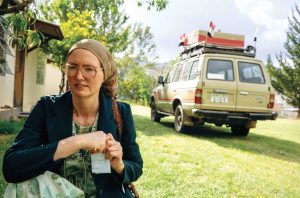 Martha Myers served in Yemen for 25 years as a doctor and delivered hundreds of babies, but she was even better known for her love for the Yemeni people, her late-night village visits and her unending pursuit to love and care for the people. This endeared her to many, but also made her a target of Al-Qaeda extremists. In 2002, Myers was martyred. Her casket was built by Yemenis, and more than 40,000 Yemenis filed past her body during her funeral.
Martha Myers served in Yemen for 25 years as a doctor and delivered hundreds of babies, but she was even better known for her love for the Yemeni people, her late-night village visits and her unending pursuit to love and care for the people. This endeared her to many, but also made her a target of Al-Qaeda extremists. In 2002, Myers was martyred. Her casket was built by Yemenis, and more than 40,000 Yemenis filed past her body during her funeral.
Single female missionaries continue to advance the gospel around the globe. The IMB honors and celebrates their invaluable contribution to fulfilling the Great Commission. For more on IMB’s 175-history of taking to the gospel to the nations, visit imb.org/175.

